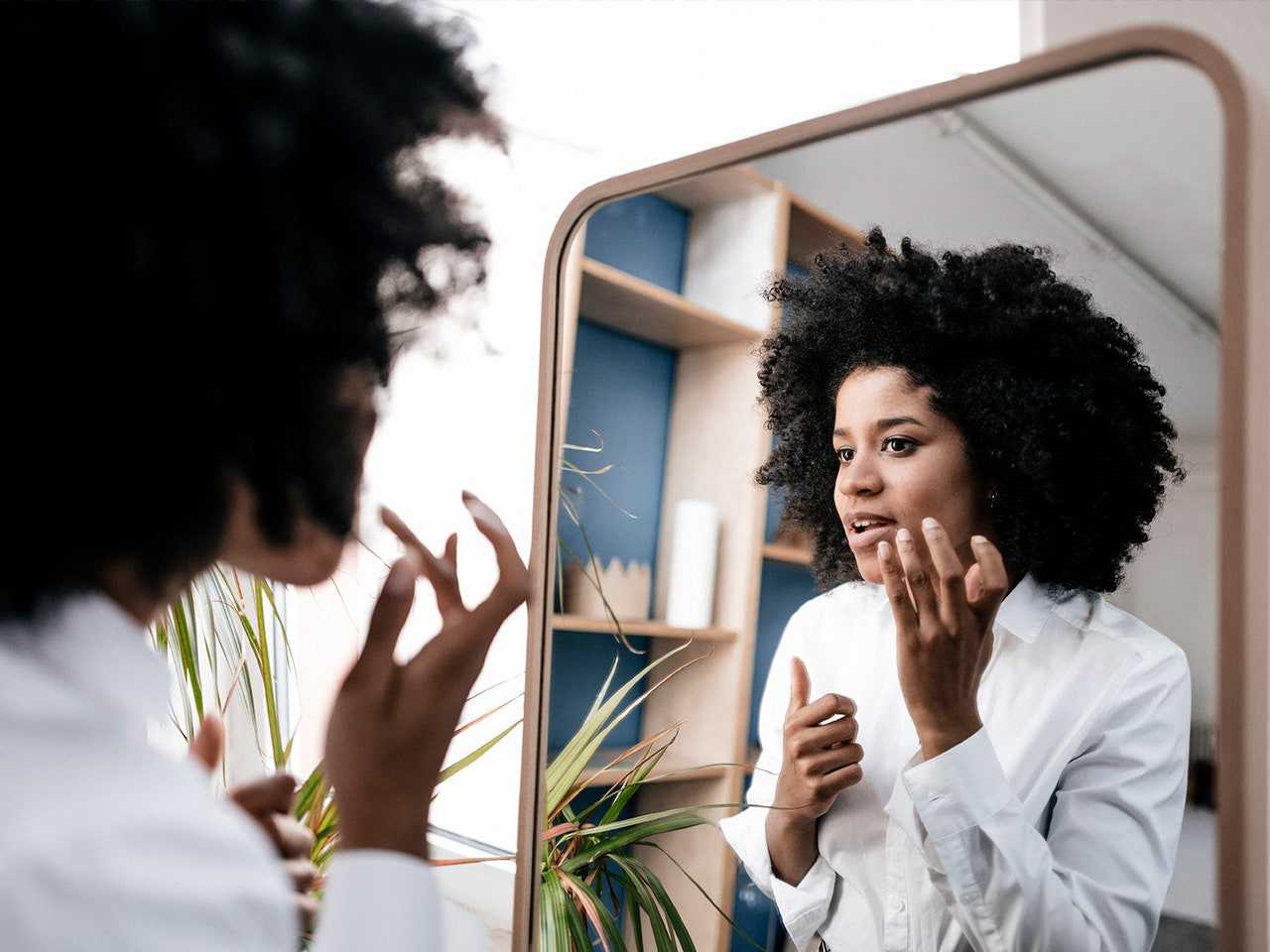Using foundation to achieve a flawless complexion is a lot easier said than done. For as many concerns as foundation can fix—hiding unwanted blemishes and evening out skin tones—it can also be the source of a lot of frustration.

We’ve all experienced foundation that feels and looks thick, cakey and, well, fake. It can turn people off from using foundation at all. But there is hope! To ensure that those who want to wear foundation can do so and get natural-looking results, we enlisted some of our favorite makeup artists to give us their best tips on how to make foundation appear smooth, beautiful, and natural.
The start of a good makeup routine is a good skin-care routine. It’s obviously easier to improve the look of your skin with foundation if your skin is healthy underneath. “The first step in getting a natural looking foundation application is skin-care,” says makeup artist Suzy Gerstein . “I am big on using an exfoliant—whether chemical or physical—to slough off dead skin cells and get the surface of your skin looking bright and smooth.” Exfoliating to a get a smoother surface will also keep product from catching in bumpy or flakey areas.
This is another key skin-care step that helps foundation application; you want to find the moisturizer that’s right for your skin’s needs and will complement your base makeup best. “Taking care of your skin-care is the most important thing, but there may be different levels of richness that are better or worse for you,” explains makeup artist Andrew Sotomayor . “If your foundation tends to look dry, you may want to switch to a richer cream or face oil.” He recommends Zelens Skincare Z-22 Absolutely Face Oil , $115, or you can try Kiehl’s Ultra Face Cream , $16.
However, if you have oily skin and notice your foundation look shiny, try something lightweight and fast absorbing like Saturday Skin Featherweight Daily Moisturizing Cream , $49. For the ultra luxe option, try Sotomayor’s recommendation, La Mer The Moisturizing Matte Lotion , $270, or Cetaphil Moisturizing Lotion , $11, for a derm-favorite drugstore pick.
Even if you do exfoliate and moisturize before applying foundation, you can still come across flakey dryness, especially around the nostrils. You can combat this with a bit of moisturizer overtop the foundation. Gerstein recommends using a cotton swab or a small buffing brush and dabbing a bit of the moisturizer onto the dry areas to smooth out the makeup.
“One of the easiest ways to get a flawless and natural application of foundation is to choose a liquid formula instead of a cream or a powder,” says celebrity makeup artist Joey Camasta . Overall, liquid foundations are easier to apply, are better to build on, and they mimic the texture of actual skin, as Camasta puts it.
Makeup artists agree that using a damp sponge is the best way to minimize cakiness. “Tapping a damp sponge, such as the Beautyblender , all over your face will even out the coverage and diffuse the product,” says Camasta.
Gerstein points out that the key to using a sponge is to make sure it’s damp, not soaking wet. To get the perfect consistency, she recommends using warm water and wringing it out in a paper towel. “Use that sponge to really work the product into your skin so it doesn’t just lay on the surface,” she says.
You’ll also want to run the sponge under your chin and around your neck to blend the shade so the coverage looks even more seamless.
Instead of packing it all on at once, Gerstein tells clients to work in light, thin layers. “This allows you to stand back and assess whether you really need a full face of base or can just spot apply,” she says. “It also gives makeup time to settle and for you to see how your skin reacts to a particular formula.” Meaning, if your foundation starts to flake in certain areas, you can go back and buff on moisturizer. Or if the top of the nose is getting shiny, you can add a bit of setting powder.
“Even those with the most problem skin won't be doing themselves any favors by spackling on product,” explains makeup artist Ashleigh Ciucci . “Always start as light as possible and use your concealer with a small pencil brush (for blemishes) or a fluffy shadow brush (for larger discolored areas) to add coverage where you need it.”
Instead of applying highlighter overtop of foundation, Ciucci recommends applying a skin oil or liquid highlighter on the cheekbones, in the center of the forehead and down the bridge of the nose before putting on foundation. “This will make your glow appear from the inside out,” she says.
When it comes to getting natural-looking foundation, pretty much every single pro shared the same key advice: Less is always more. After all, it’s easier to build onto coverage rather than take away from what you’ve already applied. Camasta recommends buying a foundation with a dropper instead of a pump to avoid over-dispensing product, adding that it may help you conserve your foundation so it lasts longer.
